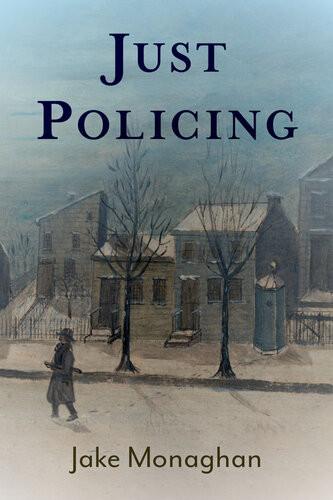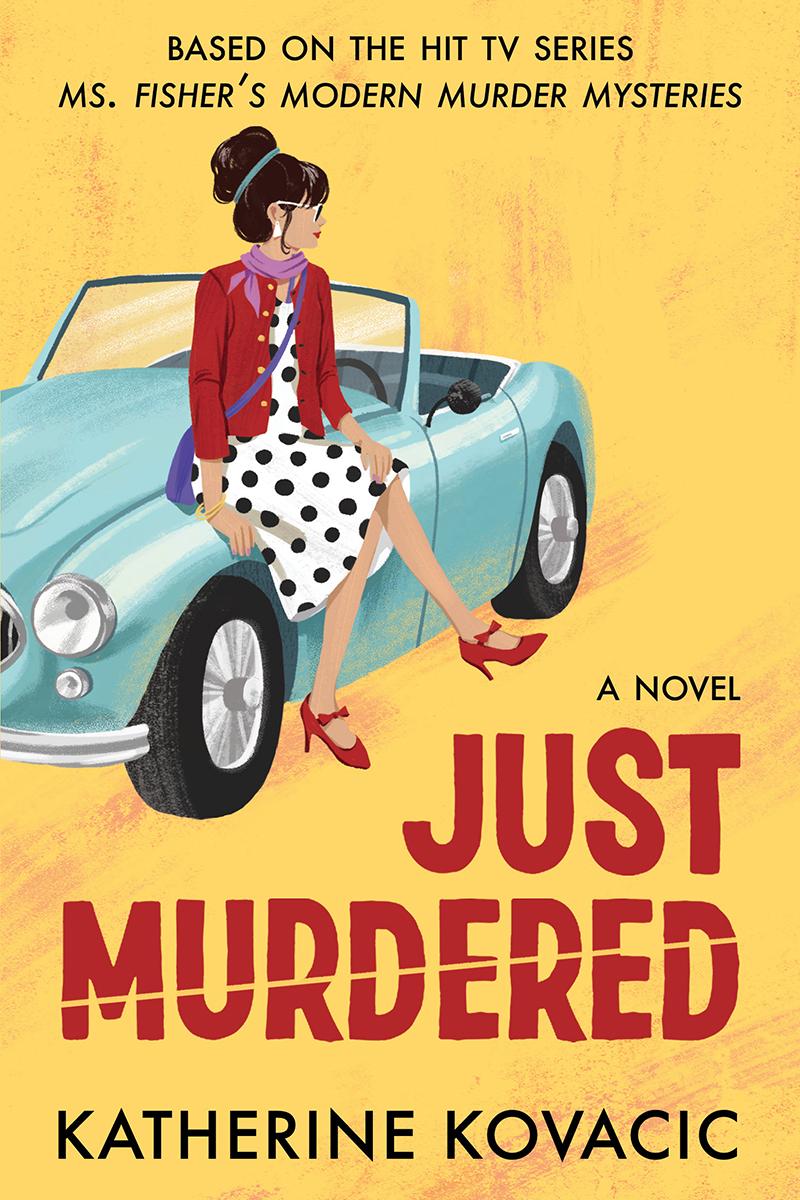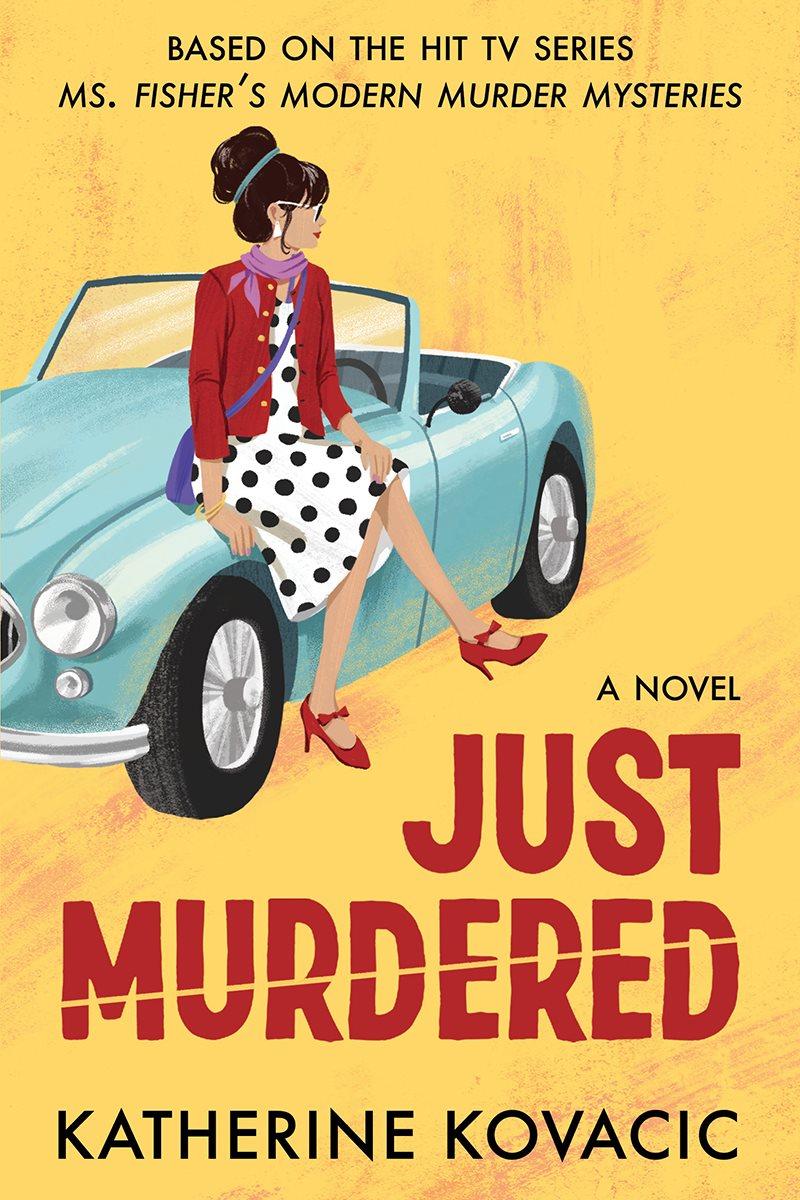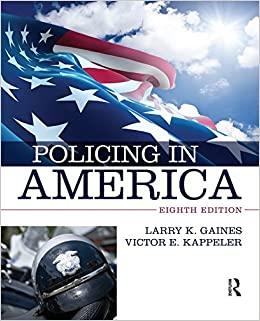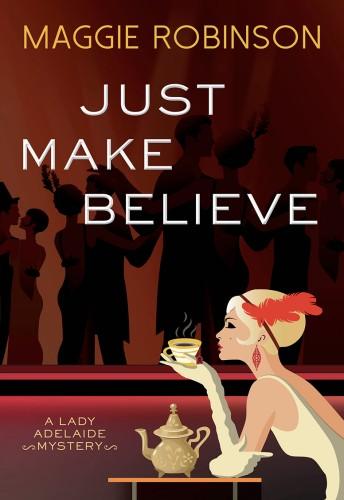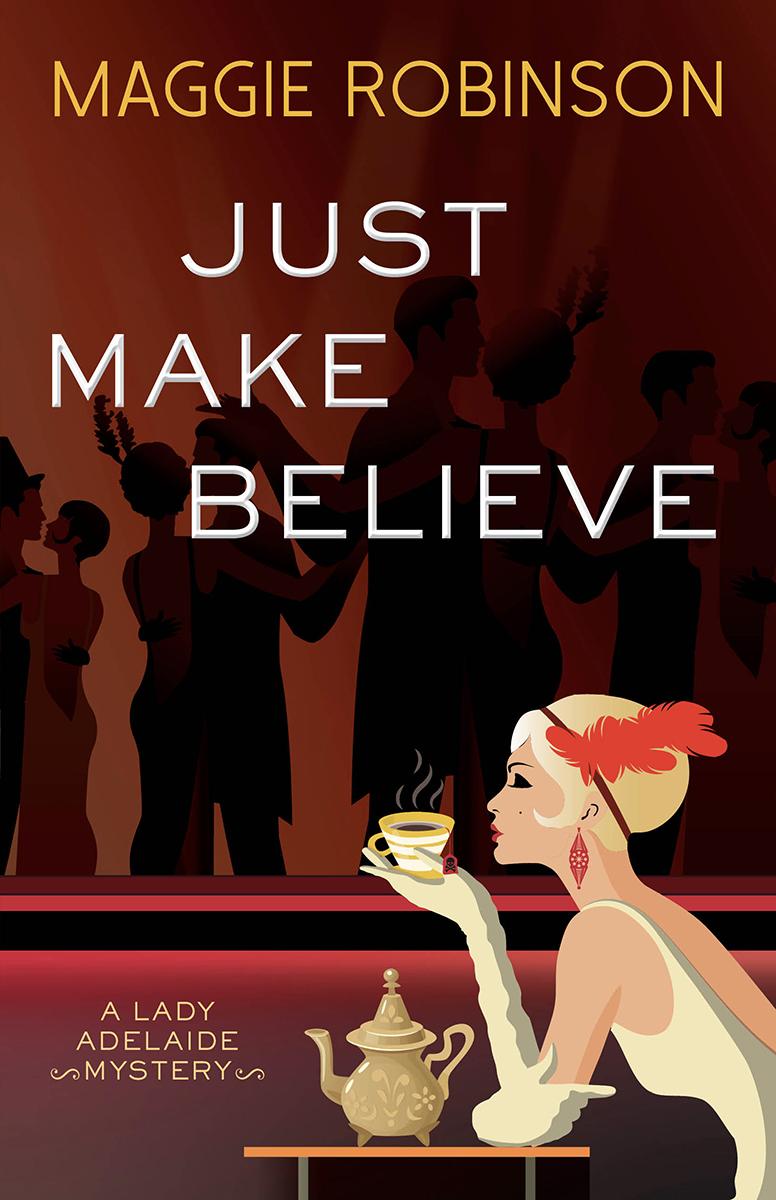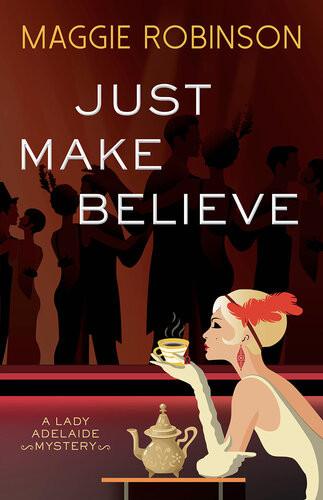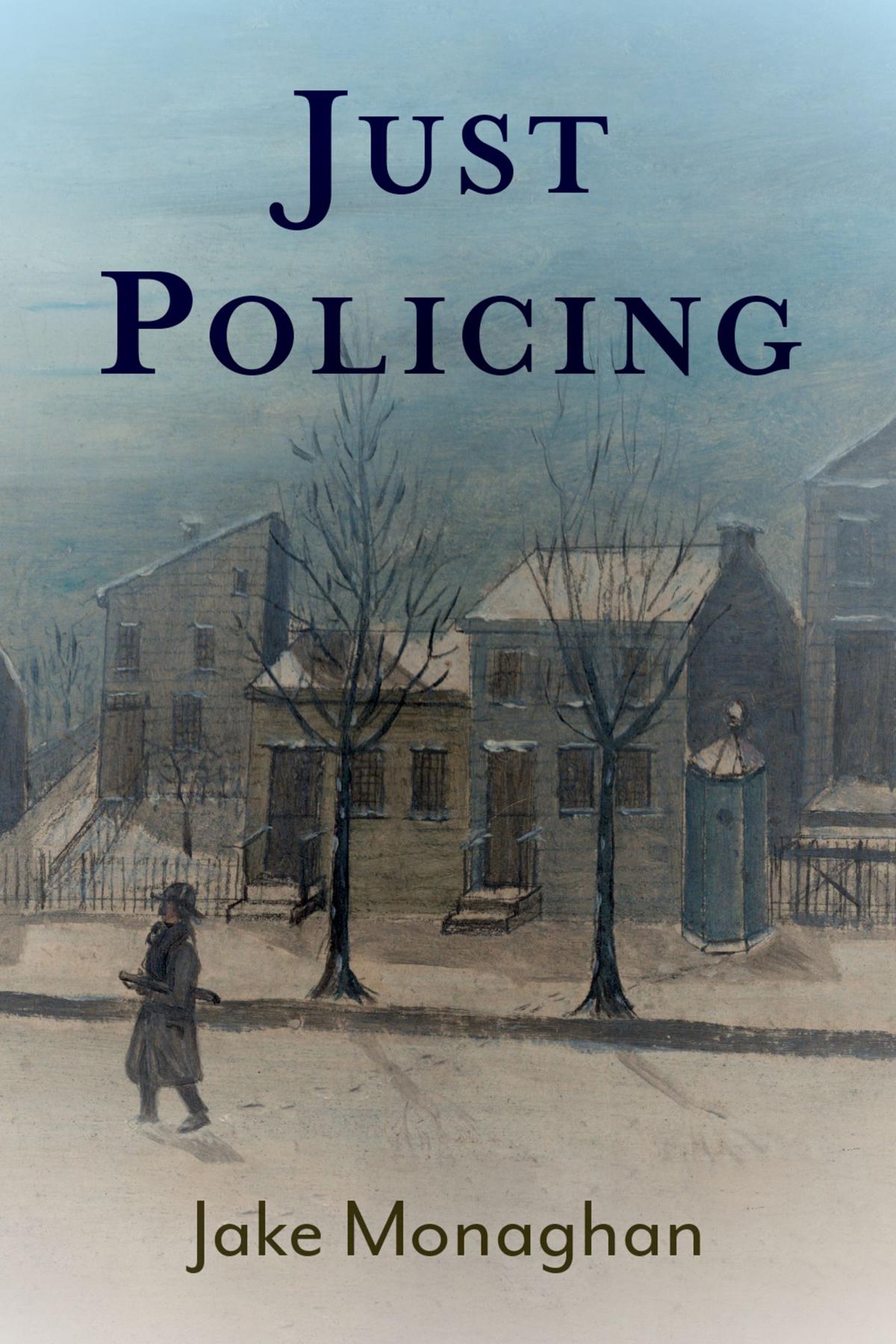Questions of Just Policing
Policing is a moral morass. The injustices of our world, many of them grave, seemingly require police. But police use violence to enforce laws of questionable justice, they arrest people while the trial system relies on coercive plea bargaining and many correctional facilities are unsanitary, dangerous places that hold little hope of rehabilitating offenders, they fire impact rounds and tear gas to break up disobedient demonstrations, and so on. The police are on the front lines of the criminal justice system, but they often end up as agents of injustice themselves. But it’s not entirely their fault. We ask them to do it. We make their salaries depend on it. And we don’t want officers simply to refuse to follow orders or to pick and choose how and when to enforce the law according to their whim. So there’s a problem here, and it’s a matter of life or death. What should police do, given the situation we put them in? In a society that’s filled with injustice, what does justice require of the police?
This is a work of non-ideal theory. It asks what just policing looks like in a world characterized by pervasive injustice. More precisely, it is a work concerned with realized, rather than idealized, institutions. What does just policing look like in our world, with its actual injustices? Political philosophers have usually been concerned with fundamental questions of justice abstracted from the particularities of the world. Philosophical treatments of these questions are typically oriented toward general answers and conducted against a background of moderate to extreme idealization: What does the just society look like, assuming that people are well motivated and that our institutions work as we imagine them to? This methodological approach—ideal theory—abstracts away questions about what our
institutions should look like in light of profound problems in society. And by abstracting them away, it leaves us awkwardly without the theoretical need for thinking about some of those problems.1 That typically includes the criminal justice system, about which these questions are perhaps nowhere as important.
1.1. Political Philosophy and the Police
There hasn’t been much work in political philosophy on the police in the contemporary sense of that term.2 This is in part because the institution we now call “the police” is rather new, not because political philosophy has nothing to say about policing.3 Many questions of justice raised by policing are ultimately new versions of old classics.
From the beginning, political philosophy has been concerned with determining how the state should exercise power over its citizens. The question has largely been motivated by the problems large groups of humans face living in proximity to one another. Book Two of the Republic takes up the task of imagining the ideally just city, where ordinary human struggles to live a good life led to the conclusion that we need a guardian class to enforce the decisions of the philosopher-kings. The classic social contract theorists held that predictable human conflict, including disagreement over what makes a good life, makes an active state necessary. Hume thought that coercive political institutions are needed just because we are morally imperfect. If we were perfect, we wouldn’t need them to settle our conflicts (Hume 1777). Generally, we can’t be trusted to resolve our own disputes; we will naturally put our thumb on the scale for our interests, and humans are naturally prone to retaliatory cycles of violence when conflicts are not resolved to mutual satisfaction. So we must relinquish them to a third party, the state, who mediates disputes and enforces the terms of their resolution.
Establishing the need for a state introduces other familiar philosophical questions about what a society should police and how it should provide that policing role. What sorts of institutional
structures should the state use to enforce its decisions? What sorts of activities may the state intervene in? Who gets to make those decisions? How do we accommodate our persistent disagreements over these matters? According to the liberal democratic view, our persistent moral disagreements mean the state needs to be controlled by us together, and it needs to be neutral regarding our moral disagreements. Hence, a public executive branch that exercises police power (directed by a legislature) is required by justice and an essential element of the state. Without disputes, we may have no need for the police. But politics is born in disagreement.
On the political Right, some libertarians and anarchists have advocated for the privatization of police forces. According to this view, it would be possible to provide all of a society’s security needs using private security firms that one subscribes to. Concerns about badly behaving security firms are addressed with a system of private insurance, where violent and dangerous private police officers would become uninsurable and therefore unemployable (Huemer 2013; Friedman 1989). Alternatively, like the “turnpike trusts” that paid for early policing, security services could be bundled with other services, such as when a store hires private security, a university fields their own police force, and a homeowners’ association pays for private patrols (Stringham 2015, 129). Other libertarians, most famously Robert Nozick, think that policing must be provided by the (minimal) state just because a system of private security firms would be unstable and inevitably evolve into a state (1974).
The liberal and libertarian project, then, is partly one of determining the legitimate scope of political, and with it, police power. Many liberals take the legitimate scope of the criminal law and police power to be quite narrow, even if they think the state may and should do much more in noncriminal contexts than the libertarians think (e.g., Husak 2008; Feinberg 1987). Of course, this project interacts somewhat awkwardly with democratic governance which often produces illiberal results.
Alternatively, democratic theorists who reject liberal (or other) constraints on political decision-making are pushed to endorse as
just and legitimate whatever kind of policing the demos selects. And those who think the role of the state is to conform others to their conception of the good and the right, whether on the Right or Left, whether utilitarians, communitarians, or (nonliberal) perfectionists, will reject many of the limits on police power set by liberals and libertarians.
Increasingly, theorists who are left-leaning, skeptical of liberalism, and optimistic about democratic authorization reject the legitimacy of public police. Police abolitionists tend to see U.S. policing as continuous with slavery, and police abolitionists take up the rhetorical mantle of the slavery abolitionists.4 They tend not to be skeptical of political power in general, or of democratic procedures which purport to authorize it, in the sense that they are not proponents of a minimal state. But they are skeptical of one of the institutional mechanisms we’ve constructed to exercise (some of) that political power: the professional police department. While certain anarchists might reject the justice and legitimacy of the police because they reject the state that employs them, police abolitionists raise special objections to the police. The problem isn’t the state, but the state’s dealings with colonizers and capitalists who co-opt police power.
A quick note on terminology: the philosophical and social scientific literature on political power and policing features a variety of senses of “legitimacy.” I’ll rely on a normative sense of legitimacy, where legitimacy just is the permission to exercise power. On this usage, legitimacy is a weaker requirement than justice, so policing could be legitimate but not just, but not just and illegitimate. In this way, figuring out the requirements of legitimacy helps determine the requirements of justice.
The big questions that have been at the center of political philosophy all along clearly implicate the police in matters of justice. But in our non-ideal world, we have to confront the fact that injustices perpetrated by police are serious enough that some theorists think that the first question to be asked about just policing
is not, What does just policing look like?, but rather, Would a just societyhavepoliceatall?or Isjustpolicingpossible?
1.2. The Problem of Policing
Some police critics hold that an ideally just world will have no criminal legal system, and thus that justice is incompatible with the police. Others hold that the actual police agencies we have are essentially unjust given their historical roots. Still others claim that the police are not only inefficacious, but that they make matters worse. Assessing these arguments will help us to focus on the various things we might want the police to do, while also foregrounding the serious injustices contemporary policing confronts us with. It will help us bring the problem of policing into full view: the injustices that motivate the police make just policing exceptionally difficult to theorize and implement.
1.2.1. Would Utopia Have Police?
According to the utopian argument against the police—one found in literature, psychology, and philosophy—the police are not part of an ideally just world because a just world would simply not have any crime or disorder. According to various ideal theories in political philosophy, if we were perfectly just, there wouldn’t even be a state (Freiman 2017; Brennan 2014; Cohen 2009; cf. Kavka 1995; Hume 1777, 474). Or there may be a state, but no need for an actual enforcement role, and so the state would not have police (Rawls 1999, 211). There is now an active literature in political philosophy on whether a theory of justice can be correct if it makes demands we are unlikely to satisfy. So the relevance of these claims for what we should do now is a matter of dispute, but they might imply that justice requires us to work to abolish the police. Others think that we can institutionalize our way out of the kinds of imperfections that lead to crime, and with it, the police role in society. Socrates held that people act unjustly because they are
ignorant, so if we had a proper system of education, we could eliminate injustice. A different but in some ways nearby vision of a just world is depicted in the popular sci-fi anarcho-syndicalist novel TheDispossessed. If there is no private property and everyone lives communally, how could there be any crime? “Nobody owns anything to rob. If you want things you take them from the depository. As for violence, well, I don’t know, Oiie; would you murder me, ordinarily? And if you felt like it, would a law against it stop you? Coercion is the least efficient means of obtaining order,” Shevek explains when asked why people don’t rob and murder in a world without (much) punishment (Le Guin 1974). Instead of (only) educating people out of injustice, we can (also) engineer our economy to accomplish that goal. Of course, there is some reason to think that our psychological quirks might pose a problem for realizing these visions. As indicated by his novel Walden Two, B. F. Skinner apparently thought that in addition to education and the abolition of private property, we would need to organize ourselves into small-scale communes and employ a systematic program of operant conditioning to eliminate the antisocial tendencies that cause crime and other forms of injustice (Skinner 1948).
What we see in these forms of idealized, utopian thinking is that the need for social control in the hypothetical, model society under consideration varies according to how extensively we idealize. If there is no resource scarcity, or if we are moral angels, maybethere is no need for social control (Monaghan 2022a). But even in moderately idealized models like The Dispossessed’s anarchosyndicalist society, Le Guin imagines communities occasionally relying on ostracism.
Some think that these ideal models tell us little about what to do in our world (Freiman 2017; Brennan 2014). Others, like philosopher G. A. Cohen, think we can derive principles of justice from reflections on them, even if we cannot actually live that way (2009). Rather, principles of justice can be gleaned from idealized models and then realized with other institutional arrangements. Though a camping trip realizes certain principles of justice (e.g., a certain kind of equality), we should not all move to the woods to camp. We should
instead remake our institutions to be relevantly like life on a camping trip (notably absent from a camping trip are markets). The problem here is that this kind of approach, by design, is not primarily oriented toward evaluating actual institutional arrangements and policy. Utopian ideal theory leaves open crucial questions about just and legitimate social control.
So we need some institutions of social control, given our nonutopian world. Many abolitionists, though, think that a world without police is actually achievable, even if somewhat far off in the future, and that we should be making changes now that push us down the path toward those kinds of institutions. This interpretation of police abolitionism has them describing, or attempting to construct, an “end-state ideal” alongside a transitional path there. Whereas utopian ideal theorists are less concerned with achievable policy changes, the end state or transitional ideal theorist is loosely describing an actual institutional arrangement with actual policies to transition to over time.5
This line of abolitionist thought is important for understanding why the view is attractive for policy advocates. If the camping trip ideal is not within a generation’s reach, it is not clearly a useful guide to policy change today. In reply, the abolitionist seeks not to “abandon communities to violence,” but to make the police “obsolete” (Kaba et al. 2021). Abolitionists, quite plausibly, argue that social welfare spending is an effective strategy for decreasing the problems we task to the police. Instead of imagining away the need for policing, some abolitionists claim that there is a set of institutions we can create to achieve the ideal.
There is a difference, of course, between identifying an ideal and determining whether we can actually get there. And meanwhile, the institutions in our actual, approximately ideal world might look considerably different from the institutions of our ideal world. A car without a brake pedal is approximately a car, philosopher David Estlund points out, but does not approximate the valueof a car with a brake pedal (Estlund 2020, 271). If institutions in our ideal look different from what we have now, we have no guarantee that they
will actually realize the justice we hope they will (Gaus 2019). Our epistemic limitations mean we have to recognize the ideal as a provisionally held goal rather than a detailed policy blueprint and political roadmap (Purnell 2021, 168; cf. Vitale 2017, 226).
Let’s focus on the problem of violence for the moment. It helps clarify the nature of the disagreement by highlighting the difference between some of the institutions of social control that abolitionists accept and the police. All parties to the debate agree that justice requires institutions, whether public or private, for deterring violence. Abolitionists sometimes point out that police spend a small amount of their time on such crimes as part of the case for abolition: it’s not like the police do all that much to solve the problem anyway. What do the abolitionist alternatives look like? Largely rejecting the “neoliberal austerity” of the last several decades in favor of social welfare programs, replacing “free trade” with “fair trade” agreements, strengthening private and public unions, “green” infrastructure investment, jobs programs, reparations, replacing capitalism with socialism, ending toxic masculinity, creating neighborhood councils with local decision-making power that aren’t dominated by one group, free twenty-four-hour childcare, “green teams” that collect neighborhood food waste for composting and plant flowers and trees to “keep [residents] cool and keep down violence,” and so on. If we make advancements toward “real justice,” by turning to noncoercive forms of social control, then the problem of violent crime will no longer require a police force (Purnell 2021, 273–283; Vitale 2017, 53–54, 221–228).6
But we might wonder whether such optimism is justified. Can we eliminate the need for the police by targeting “root causes” alone? That is not obvious. Redirecting money we now spend on policing to housing support, education, healthcare, to community-based social workers, to food waste composters, and so on will treat some root causes of crime. But changing root causes works on generational timescales, and some might reasonably demand more immediate solutions (Abt 2019). And we know that there are proximate causes of crime, like a high density of certain kinds of commercial activity,
or retaliatory cycles of violence—management or prevention of which, recall, is one of the classic justifications for a state. It is also unlikely we actually know how to solve the problem of violence. But if we don’t have the path to the ideal in clear view, we should think that justice demands incremental policy experimentation.
Further, to obviate the need for policing, these social spending programs, and other forms of organizing for real justice would need to virtually eliminate crime, or at least reduce it such that the remaining violence is an acceptable cost of doing business. Some will be reasonably skeptical that these reforms will create bountiful equality and thereby drastically reduce the amount of violence in society. Will changing economic policy to counter the trend toward globalism or empowering private sector unions actually enrich us? Do housing policies like rent control improve the least well-off in the housing market and empower them to participate in neighborhood councils? Or should we focus on eliminating restrictive zoning and occupational licensing instead? In other words, the problem isn’t merely that we don’t know all the changes we’d need to make to eliminate violence, but rather that there is reasonable disagreement over whether these proposals will accomplish their goals and also sufficiently reduce violence. And the actual question is not whether ideal root causes programs will work, but whether the actual programs that survive pluralistic policymaking will work. Justice might require us to retain a small homicide and violent offenders’ unit.
Let’s take stock. What we see here is a run-of-the-mill political dispute over how to achieve a goal everyone shares as opposed to a battle between good and evil. No one knows what the best realized institutional arrangement is, or how to pull policy levers to virtually eliminate the roots of violence (or the other needs for social control). Until we do, we’ll want some social control addressing proximate causes of unwanted behavior. We have some good ideas that require experimentation, and it is likely that some of them will have grave shortcomings (like our actual police departments). And because people will have reasonable disagreements over these policy experiments, no one should expect to achieve their idea of the ideal
institutional arrangement. The actual world is one of non-ideal policies and half-measures. What we need, then, is not merely to take up a non-ideal methodology in which we set out to discover principles of justice and design institutions that apply to imperfect humans in dynamic environments characterized by scarcity. What we need is a “doubly non-ideal” methodology in which we ask what our institutions should look like given human and environmental problems, as well as problems in whatever institutions we create to solve the initial problems.
1.2.2. Are Police Essentially Unjust?
If the realm of realized politics is the realm of non-ideal halfmeasures, the nature of the question changes. Independently of whether police would exist in an ideally just world, the right question is: Given our actual world, are our actual police a net-positive force for justice? We’ll look at two arguments for a negative answer. The first holds that the police are essentially unjust given their institutional histories. The second holds that the balance of empirical evidence shows that police are ineffectual, and so a net injustice.
The abolitionist critique often relies on the claim that the police are essentially tools for the powerful to control the disempowered. The London Metropolitan Police was an outgrowth of Robert Peel’s work managing the British occupation of Ireland; departments in the South are outgrowths of slave patrols, and departments in the Northeast are outgrowths of union-busting initiatives or an attempt to control the “dangerous classes” made up of immigrants and the indigent. The push to diversify police forces is really just refashioning the colonizer’s strategy of using a member of the disempowered group to appease the oppressed and legitimize the oppressors (Purnell 2021, 87). What we see, everywhere we look, is the same: police departments being used as a tool for unjust social control. Unjust social control is in the DNA of policing, so reform and just policing are impossibilities. In fact, the criminal legal system isn’t broken; this is what it’s designed to do (Kaba et al. 2021, 93; Butler 2018; Alexander 2012).
The problem for this kind of view is that it relies on an overly simplified historical and political picture. Surely then, as now, police agencies were engaged in some unjust, illegitimate social control. They enforced massively unjust political decisions. But they also responded to conflicts of interest, some of which genuinely needed settling. Of course, they often settled them unjustly. But their injustices are often an unsurprising manifestation of the problem of policing; they are the result of some seizing the reigns of social control unjustly.
Here’s a quick elaboration on that account. Before professional police departments existed, villages and cities had a “constable and watch” system. This system, and the “hue and cry” it relied on, was codified in England in 1285 under the Statute of Winchester. Constables made arrests, secured witnesses, served papers, and managed a watch patrol staffed by “beadles” and watchmen. Night watches (which essentially enforced a curfew), and later separate day watches, were staffed originally by volunteers. Public watches were supplemented by private watchmen paid for by merchants. Members of the watch would patrol, typically with a lantern and calling the time, and sometimes also with a wooden rattle. If they witnessed a person out a night, they would question them. If they witnessed a crime, they would raise the hue and cry, or make noise to alert others nearby, and everyone was expected to participate in apprehending the criminal (Monkkonen 1981, 32; Lane 1967, 12). This system was brought to the American colonies where settlements likely had some informal night watch from the beginning.
Boston’s formal city watch system was established in 1643 (Dulaney 1996, 3; Lane 1967, 10). New York’s came not too long after. Charleston, South Carolina, established a formal watch and built watch houses in 1685.7 Legislation established a formal slave patrol throughout the colony, tasking the Charleston watch with enforcing new restrictions on slaves and creating patrols outside of Charleston in 1701 (Hadden 2001, 17, 35). There is evidence of paid watch positions in London as early as 1710, and some watches
carried numbered badges as early as 1726. There were paid, hierarchical night watches in dense London parishes by 1775 (Reynolds 1998, 10–15, 57). The system lasted for around 600 years, professionalizing and growing sporadically. The first uniformed police agencies subsumed existing watch functions.
Professionalization was often motivated by a fear of property crime, especially while traveling at night (Reynolds 1998, 4–20, 57, 95–101). In London, a privately funded dock patrol was taken over by the city and renamed the Thames River Police in 1800 (Reynolds 1998, 76). In Washington, DC, the Capitol Building’s watch was replaced by the Capitol Police in 1828. City watches were replaced by police forces in New Orleans in 1796, London in 1829, Boston in 1838, and New York City in 1845. Gold rush San Francisco established a police force in 1849 before it even had a watch house to detain prisoners.
In the centuries between establishing city watches and uniformed police departments, there were major changes that made the need for better policing obvious. Boston and New York City went from small towns with pastures to booming cities. Backyard wells were common, and before cities built public sewers, there were sanitation problems. The densely constructed wood buildings were fire risks. The threat of thieves pushed cities to install streetlamps requiring maintenance and lighting. They knew density heightened not only the risks of infectious disease, but it also heightened social friction. More density means more people who might bother you. It also means more claims on public space. Without public control, “volunteer” societies sometimes take up that role. Too many people walking through flower gardens and letting their animals graze in newly constructed Central Park was nearly fatal to the park (Thacher 2015). Density also meant the old informal methods of social control (like public shaming and the hue and cry) were less effective. The conservative English commitment to amateur, volunteer policing was strained by the low quality of the watchmen, and the political battle in London was resolved in favor of professionalism by 1820 (Reynolds 1998, 89, 125). In Boston, the Sheriff and the “firewards”
alike increasingly struggled to force bystanders to assist with arrests and with firefighting “bucket brigades.”
New cities created two new things for governments to provide professionally: public health and public order, and the city watches devoted much of their attention to them (Monkkonen 1981, 34–35; Lane 1967, 10–12).8 Often, these concerns were difficult to separate, as evident in the early history of policing urban sex work. There, people were simultaneously worried about the spread of sexually transmitted illnesses such as syphilis and the nuisance of solicitation in public in addition to the standard moralizing reasons (Thusi 2022, 29–32).
Public health, the orderly use of public spaces, and protection from property crime and violence weren’t the only challenges of industrializing cities. Ethnic conflict was a problem as well. Police historian Roger Lane explains that the problem of “mob violence” induced Boston to add a “new class of permanent professional officers” to the nearly 200-year-old city watch (Lane 1967, 26). The mob violence that led to the creation of a professional, preventive police force was not made up of “unruly immigrants” or oppressed laborers. It included (among other incidents) the burning of the Charleston Convent in 1834, and later the Broad Street Riot in 1837 (a year before the professional police department was created), which was a clash between a volunteer fire company and an Irish funeral procession. The Irish, who lived along Broad Street, were attacked by a mob that grew to 15,000, or one-sixth of the city (1967, 33). There were violent conflicts between capitalists and laborers. But there were other conflicts, too.9
The connection between density and policing is evident in the South, too. In dense Southern cities, the need for a watch preceded the formal slave patrol, which arose typically when the slave population surpassed the white population (Hadden 2001). This explains why the watch in Charleston was multipurpose. But in rural areas, the need to control slaves and indentured servants preceded the need for a formal watch, so the slave patrols came first there.
After the Civil War and Reconstruction, of course, the police forces were used to maintain racial control.
What about police departments in other cities? Empirical investigation suggests that the size of a city is a better predictor of how soon it created a uniformed department than crime rates or labor strikes (Monkkonen 1981, 54). More recent work finds that the racial composition of a city is nota predictor of the creation of early police departments in the Northeast, casting doubt on the view that they were primarily a response to the “dangerous classes” (Salimbene 2021). As police historian Robert Fogelson notes, the early police were typically antagonistic to labor unions, radicals, and minorities, and this influenced their policing (Fogelson 1977, 34). But the actual genesis and day-to-day work of policing was more complicated.
The early police departments maintained some of the personnel and many of the qualities of the watches they replaced, including their unusual-to-us list of activities. According to Fogelson:
From the outset most Americans had only a few vague ideas about what the police should do besides maintain public order. . . . In the absence of other specialized bureaucracies, the authorities found the temptation almost irresistible to transform the police departments into catchall health, welfare, and law enforcement agencies. Hence the police cleaned streets and inspected boilers in New York, distributed supplies to the poor in Baltimore, accommodated the homeless in Philadelphia, investigated vegetable markets in St. Louis, operated emergency ambulances in Boston, and attempted to curb crime in all these cities. By the end of the century most departments engaged in a wide range of activities other than keeping the peace. (Fogelson 1977, 16–17)
If anything, Fogelson downplays the prevalence of the early police as providing welfare services. Historian Eric Monkkonen finds that such activity sometimes dominatedtheir other activities:
Almost from their inception in the middle of the nineteenth century until the beginning of the twentieth, American police departments regularly provided a social service that from our perspective seems bizarrely out of character they provided bed and, sometimes, board for homeless poor people. . . . Often, especially in the winter or during depression years, there would be food, usually soup—nothing fancy, but something. During very bad depression years or harsh winters, the number of overnight lodgings provided by a police department exceededallannualarrests. (Monkkonen 1981, 86–87, emphasis mine)
Monkkonen estimates that “between 10% and 20% of the U.S. population in the late nineteenth century came from families of which one member had experienced the hospitality of a police station” (1981, 96).
One explanation, then, of the development of professional policing looks to the unavoidable problems facing the growing city. The weakening informal social control strategies combined with new and more pronounced public health and public disorder problems demanded an evolution of the constable and watch. The “need” to guard against the threat of slave revolts in the South drew the watch system into patrolling for slaves or created slave patrols anew (the latter of which are clearly essentially unjust). But in some cases, cities created uniformed police, and expanded their departments, just because that’s what most cities were doing. The innovation had become as expected as sidewalks (Monkkonen 1981, 61). The “essentially unjust” thesis has social domination at the center of the story. When we look to the history of English and U.S. police departments, though, we don’t see a pure power grab by the politically empowered over the disempowered. We see the piecemeal formation of an institution for providing some important social control functions that is in some cases unjustly captured.
This historical sketch highlights the following important point. The actual policies and institutions we have are the result of a complex political process involving many agents with many perspectives and interests. The inference from the actual consequences of policy to the intentions of the policy is fallacious (Monkkonen 1981, 52). According to Monkkonen, we may just as plausibly claim that the police “were created” to house the homeless or return lost children
to their parents because that is what they did. But arguing about what the intended consequences of the rise of police agencies were by determining whether the control over the working class or the provision of social services was somehow more essential to the early police agency would be to miss the point. Our political institutions manifest in different ways because an agency’s behavior is never fully determined by the various intentions that went into its creation.
Importantly, though, the dispute over whether police are essentially or intrinsically unjust is not one that can be won in the arena of historical scholarship. Even granting abolitionists this position in the historical dispute, there is a hint of the genetic fallacy in the argument. Whether your city’s police department is just and legitimate depends in part on what it does now. And on that question, the abolitionists and the reformists will certainly agree that much of what they do now is unjust. Yet whether justice requires abolition, or whether we have reason to want a police force, will depend on other facts.
The further development of policing through the reform and professionalization eras of the twentieth century can be interpreted as additional evidence of the unavoidable nature of demands for these services. While the city watches and early beat cops spent a good deal of their time on public order and public health issues, the police profession became much more focused on (violent and property) crime. Police chiefs, like influential reformer and Berkeley, California’s first police chief August Vollmer, complained about vice and traffic policing because it interfered with “real policing,” and ethnographies routinely find officers with similar views about “social work” aspects of policing (Brooks 2021; Brown 1988; Vollmer 1928). But people continued to complain about what we sometimes now call “quality of life” issues, and police somewhat unwillingly devoted attention to “order maintenance.” The police and the policed came to have divergent views of what they should focus on (Thacher 2001). The Broken Windows hypothesis, police scholar David Thacher (2004) suggests, allowed police to attend to order maintenance issues while conceiving of their actions as fighting crime (preventing the first broken window prevents the crime wave). The point is just
that people want an agency attending to these issues, and that has been a driving force throughout the history of policing that is intertwined with unjust quests for social control.
On this point, note that abolitionist alternatives raise exactly these concerns. The root and proximate causes of crime are handled separately: ending neoliberal austerity or achieving the socialist revolution targets the roots, and other forms of social control target the proximate causes. Instead of a professional police force, we might return to community patrols. Abolitionist groups are experimenting with this: an abolitionist success story comes from Brooklyn, where for five days “violence interrupter and crisis management groups” maintained a visible presence on two blocks and there were no calls to the police (Gonen and Grench 2021). But how may those community patrols police their neighborhoods? Is it ok for “the community” to, for example, engage in “positive loitering” to harass drug dealers or sex workers into dispersing?10 Or for business owners or municipalities to turn to “hostile architecture” or civil strategies for controlling public space like hiring contractors to clear homeless encampments? When may mental health response teams coerce an individual into compliance? All abolitionist alternatives involve social control and the policing of public space. The risk of unjust policing is therefore always with us.
1.2.3. Do Police Keep Us Safe?
The claim that police are ineffectual is another motivation for abolitionism. If they don’t keep us safe, then they’re not worth any of their injustices. Let’s turn to the social scientific disputes about police efficacy and their role in the case for police abolition.
Sociologist Alex Vitale describes the view that police exist to protect us from predators as “largely a liberal fantasy” (2017, 32). Vitale holds that policing is largely unjust, though concedes that it cannot be reduced entirely to unjust social control; police are also concerned with public safety (2017, 51). But we have empirical evidence that police do not provide public safety. Vitale relies on
political scientist David Bayley, who in an influential work on policing, sharply summarizes the scholarly consensus of the 1980s and early 90s:
The police do not prevent crime. This is one of the best kept secrets of modern life. Experts know it, the police know it, but the public does not know it. Yet, the police pretend that they are society’s best defense against crime and continually argue that if they are given more resources, especially personnel, they will be able to protect communities against crime. This is a myth. (1996, 3)
Bayley cites a variety of empirical work to support this conclusion, noting in particular that there is no relationship between the number of police officers a city has and their crime rates. Additional evidence comes from specific studies of patrol, rapid response, and criminal investigation. There is no evidence, Bayley claimed, of the primary police activities reducing crime, nor is most of their time spent on that.
Though it is tempting to appeal to Bayley’s findings in making the case for abolition, it is striking that he interprets these results differently:
No one seriously proposes on the basis of these studies that police be disbanded and sent home, although that would save a great deal of money. Although criminals do not seem to notice normal changes in the number of police, they would surely notice if there were no police. It is probably also true that at some point adding police would make a difference in how much crime occurs. (1996, 4)
The problem is confusing the deterrence effect of an additional police officer with whether police deter crime at all. What Bayley claims is that the small changes in the amount of policing an area receives caused by normal policy and budgetary changes are unlikely to have an impact on crime rates. If the police chief claims a 5 percent personnel increase in the patrol division will finally solve the violent crime problem, you should be skeptical. But that does not mean that the police are ineffectual.
Additionally, policing became more proactive in the 1990s under the influence of police scholars like Herman Goldstein, George Kelling, and James Q. Wilson, and influential New York City police
commissioner Bill Bratton. Rather than random patrol, proactive and pretextual stops became more common, ultimately reaching an average of over 1,200 stops per day from 2003 to 2013 in New York City (Apel 2016). Programs like Compstat enabled “hot-spots” policing, where departments deploy officers to high-crime areas. Perhaps because of some of these changes, recent results paint a different picture of the deterrent effects of police.
One study finds that the addition of one officer abates 0.1 homicides, though with the trade-off that quality-of-life arrests also increase. The result is that black Americans bear more of the burden of policing (because they are more likely to be arrested for qualityof-life misdemeanor violations), and less likely to enjoy the benefits of reduced crime (which accrue to white Americans) (Chalfin et al. 2020). Another finds that each officer added to a police force with grant money from the federal Community Oriented Policing Program prevents four violent crimes and fifteen property crimes (Mello 2019). In particular, more homicide detectives, and more investigative resources, can both increase homicide clearance rates (Braga et al. 2019). Meta-analyses find that hot-spots policing and police presence reduce crime (Dau et al. 2021; Braga et al. 2019). Finally, there are some grounds for a more optimistic assessment of foot patrol. Research conducted over a few years beginning in 2009, on foot patrol in Philadelphia, found that the strategy can reduce crime. Saturation is not required, though making the patrol beat too large does eliminate any impact (Ratcliffe and Sorg 2017). In New Orleans, the French Quarter Task Force increased the patrol presence in a tourist-dense section of the city, leading to double-digit drops in property crimes and assault (Cheng and Long 2018).
What about the effects of de-policing? A sudden 13 percent reduction in the size of the Newark, New Jersey, police department (due to layoffs from a budget shortfall) was associated with a large increase in property and violent crime when compared with crime rates of nearby Jersey City (Piza and Chillar 2020). The Capitol Hill Occupation Protest Zone in Seattle forced Seattle Police to abandon the precinct, and they stopped responding to calls for service in the occupied zone. Research finds a spike in crime during this period
(Piza and Connealy 2022). Of course, these are both unusual scenarios, and we shouldn’t generalize from them alone. Research on police “pull-backs” has mixed results. A reduction in arrests is not always associated with increases in crime (Cho et al. 2022). If police stopped making arrests entirely, we should probably expect to see some kinds of crime occur more frequently. But it is not as simple as “more arrests mean lower crime” or “fewer arrests mean higher crime.”
To be sure, plenty of policing isineffective. Critics are right when they say that policing drug use and sex work has been not only ineffective but has made matters considerably worse. They are also right that arresting as a way to eliminate informal homeless encampments is unwise, and that U.S. police are currently doing an awful job of investigating serious crimes like rape and homicide.
This is far from a full evaluation of the social scientific evidence or a full cost/benefit analysis, but that is not the goal. The point I want to establish here is not that contemporary policing in the United States is the most effective tool for providing public safety. The point is merely that we have some good evidence that policing can address some of the problems we assign to it. That certain injustices will be a cost of the crime reduction bears emphasizing and will be my main focus throughout the book. But apart from disputes about the particular social scientific research, this result shouldn’t be all that surprising: we know we can shape behavior by making certain actions costlier or by raising the likelihood of incurring costs. Many abolitionists are ultimately committed to the view that some of these activities, foot and traffic patrol in particular, can deter unwanted behavior, since many are attracted to the idea of non-police alternatives like the citizen patrol and unarmed traffic enforcers.
1.2.4. Should We Reimagine Public Safety?
Some seem to think that we can bypass the problem of policing by providing all of our social control functions with other non-punitive agencies. This includes turning traffic enforcement over to unarmed civil servants, dispatching mental health professionals instead of
police to many 911 calls, and replacing police patrols with volunteer (or paid but non-police) citizen patrols and violence interrupter programs. It also includes removing police officers from schools and abandoning punitive orientations to purportedly vicious activity (such as drug use, sex work, and rough sleeping).11
We have evidence that some of these non-police alternatives work. Chicago created a Safe Passage Program that employed community members to monitor city blocks near schools and along main routes students would take to and from school to protect students on their commute. Empirical investigation finds double-digit crime declines on monitored blocks (Gonzalez and Komisarow 2020; McMillen et al. 2019). Patrick Sharkey and colleagues have persuasively argued that the creation of new community-based nonprofits is an important but overlooked factor in the crime decline of the 1990s (Sharkey et al. 2017). Several cities are now following Eugene, Oregon’s CAHOOTS program in dispatching mental health professionals to some calls instead of police. Eugene’s program has responded to thousands of calls for service per year since the 1990s (Akinnibi 2020). The mental health teams are quite appealing in light of the history of ambulance and emergency medical service teams whose functions were originally (and poorly) performed by police in some cities. We’ve peeled off that function with great success and have the opportunity to do something similar again.
In the cases just described, the police alternatives are engaged in some social control activities that police are typically engaged in. They are deterring crime by patrolling, much like the city watch, and much like professional officers assigned to foot patrol. The crisis response teams are responding to those having mental health problems and de-escalating the situation in some fashion, but they are often adjudicating disputes over the use of space (after all, someone still needs to make a call for service). The violence interrupters, too, are trying to adjudicate disputes and also to break cycles of violence and retaliation. The purpose of these roles is to give its occupants the duty to protect or intervene in rights violations, perhaps to collect evidence for presentation in new, non-
retributive trial systems, and to manage the social frictions that arise from our metaphysical extension into the world. These are, according to policing scholar and former police chief Brandon Del Pozo, the distinctive functions of policing (del Pozo 2022). This suggests that the temptation to identify the police as being the mechanism for social control is a mistake. Police sociologist Egon Bittner famously defended the view that police are not law enforcers but a mechanism for social control (Bittner 1967, 39). Even if we reject Bittner’s conception of the police, it helps us to avoid a mistake we might make in defending abolitionism, namely assuming police alternatives aren’t forms of policing.
To be clear, I am not saying these alternatives use the same tacticsor institutionalform that police use, or have the same goals. The differences are clear. But the alternatives are policing, still an expression of a claim on social control, and the reimagined public safety agencies would have genuine continuity with the foot patrols that preceded city police departments.
What would it look like to start transferring responsibilities away from the police? What proportion of current calls for service to the police can easily be turned over to an alternate agency today? The positive results we’ve seen unfortunately must be qualified by quantitative assessments of police calls for service. Though mental health crisis teams are increasingly popular and perhaps the paradigmatic near-term abolitionist alternative, we have empirical work showing that only a small minority of calls are for mental health reasons. According to the Eugene Oregon Police Department, CAHOOTS diverts only 5 to 8 percent of their calls for service (Eugene Police 2020). In Philadelphia, only around 8 percent of calls to the police are medical or public health in nature (Ratcliffe 2021). An investigation of pre-COVID-19 pandemic calls for service to nine U.S. agencies (all with populations over 400,000, with a variety of geographic locations and levels of urbanization) has similar findings: no agency had mental health calls account for more than 4 percent of their call volume; 1.3 percent of calls to those nine agencies were mental health calls compared to averages of 5.8, 6.4, 10.2, and 16.2 percent for domestic, violence, property, and disorderly calls,
respectively (Lum et al. 2021).12 Ratcliffe finds that 54.7 percent of calls for service in Philadelphia are “crime” related, with 13.7 percent for quality-of-life issues (similar to Lum et al.’s category of “disorder”). Interestingly, Ratcliffe also finds that 11.6 percent of health-related calls end up resulting in a “crime disposition.”
That some mental health calls end up requiring coercion explains why emergency medical technicians often call the police themselves, and why many agencies have turned to “co-response models” in which plainclothes mental health professionals ride along with uniformed officers in patrol cruisers (Morabito et al. 2018). Eugene’s CAHOOTS program will dispatch civil responders alone in some cases; in 2 percent of those cases the mental health responder will call for police backup. CAHOOTS responders called for police backup in a third of the cases where they were dispatched to a trespassing call. The Eugene Police Department emphasizes that the bulk of CAHOOTS responses would not normally involve calls to the police (Eugene residents are aware of CAHOOTS and will make calls knowing they can get a non-police response). This shows that it is easy to overestimate the diversion rates of these models. It also shows that there remains a large appetite for a response team available at all hours that helps solve many of the problems we originally turned to city watches for.
Beyond the practical need for an agency available 24/7 to respond to calls for service, another fact about our world suggests that something importantly like today’s police departments will always be a part of realized societies. There is only so much room for specialization. We can continue to hand off police functions to specialized alternatives as we have with emergency medical services and public health agencies before that. But the unavoidable vagueness and complexity in the world suggest that there is a real limit to specialization (both for statutes and agencies). When we hit that limit, we’ll have to turn over the “residual category” to a more generalist agency (Thacher 2022; 2014, 123).
This suggests that in the near term, before a substantial amount of policing can be rendered obsolete through expansive economic
